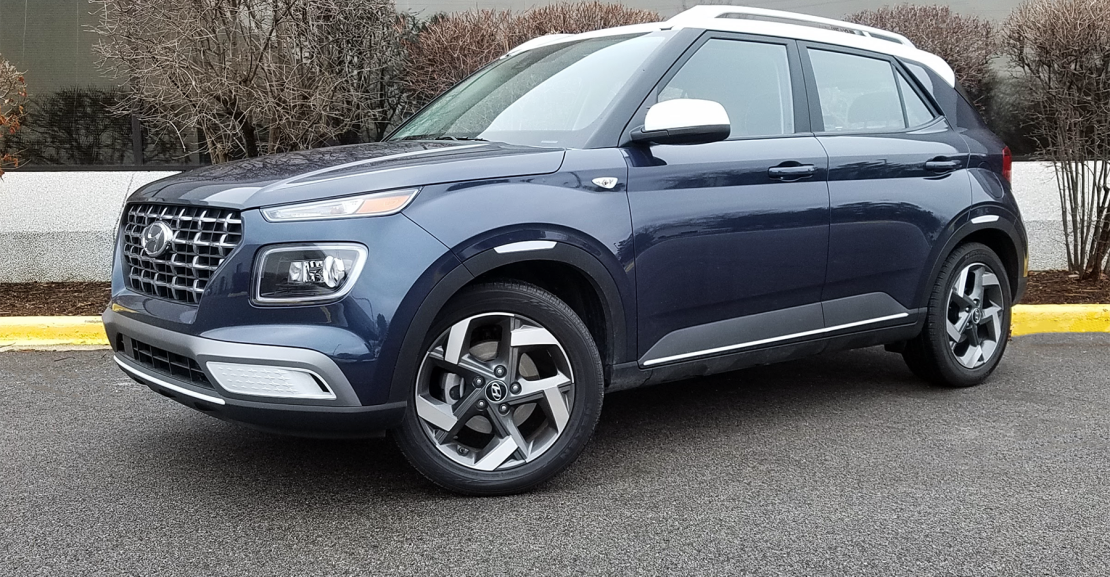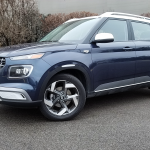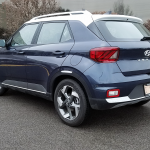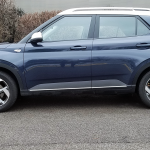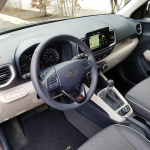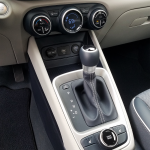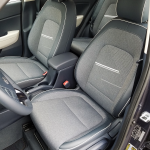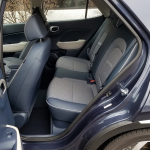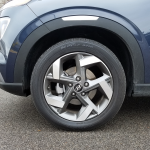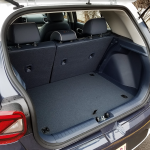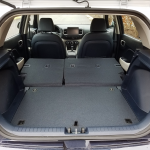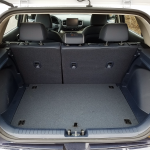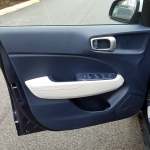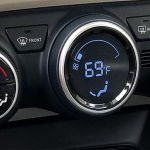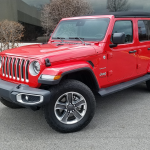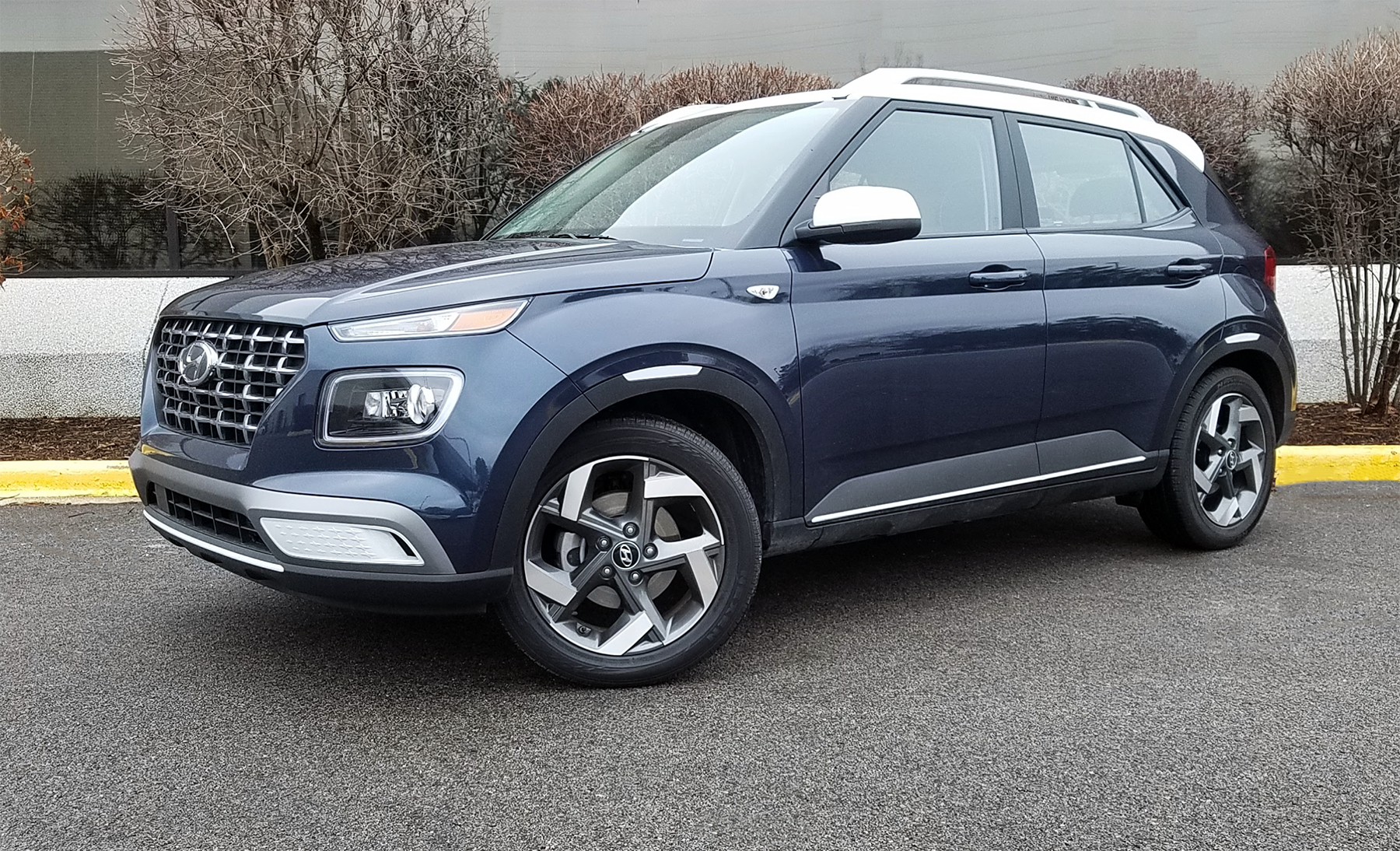
 2020 Hyundai Venue Denim
2020 Hyundai Venue Denim
Class: Subcompact Crossover
Miles driven: 519
Fuel used: 14.4 gallons
| CG Report Card | |
|---|---|
| Room and Comfort | B |
| Power and Performance | C |
| Fit and Finish | B+ |
| Fuel Economy | A |
| Value | A- |
| Report-card grades are derived from a consensus of test-driver evaluations. All grades are versus other vehicles in the same class. Value grade is for specific trim level evaluated, and may not reflect Consumer Guide's impressions of the entire model lineup. | |
| Big & Tall Comfort | |
| Big Guy | C |
| Tall Guy | B+ |
| Big & Tall comfort ratings are for front seats only. "Big" rating based on male tester weighing approximately 350 pounds, "Tall" rating based on 6'6"-tall male tester. | |
| Drivetrain | |
| Engine Specs | 121-hp 1.6-liter |
| Engine Type | 4-cyl |
| Transmission | CVT automatic |
| Drive Wheels | FWD |
Real-world fuel economy: 35.7 mpg
Driving mix: 35% city, 65% highway
EPA-estimated fuel economy: 30/34/32 (city/highway/combined)
Fuel type: Regular gas
Base price: $22,050 (not including $1120 destination charge)
Options on test vehicle: Carpeted floor mats ($135)
Price as tested: $23,305
Quick Hits
The great: Excellent observed fuel economy; value for the money
The good: Extra-tidy exterior dimensions and slightly elevated driving position make parking and close-quarters maneuvering easy
The not so good: So-so acceleration; all-wheel drive is not available
More Venue price and availability information
John Biel
It may have been decades since you last heard the expression “population explosion.” It always came up in serious discussions of the expanding count of humankind and what would be required to sustain it. Demand for food, shelter, and energy naturally topped all concerns. Somewhere way, way down the list was “how will all these people run errands?” In our time, the answer to at least that question has become clear: Crossovers.
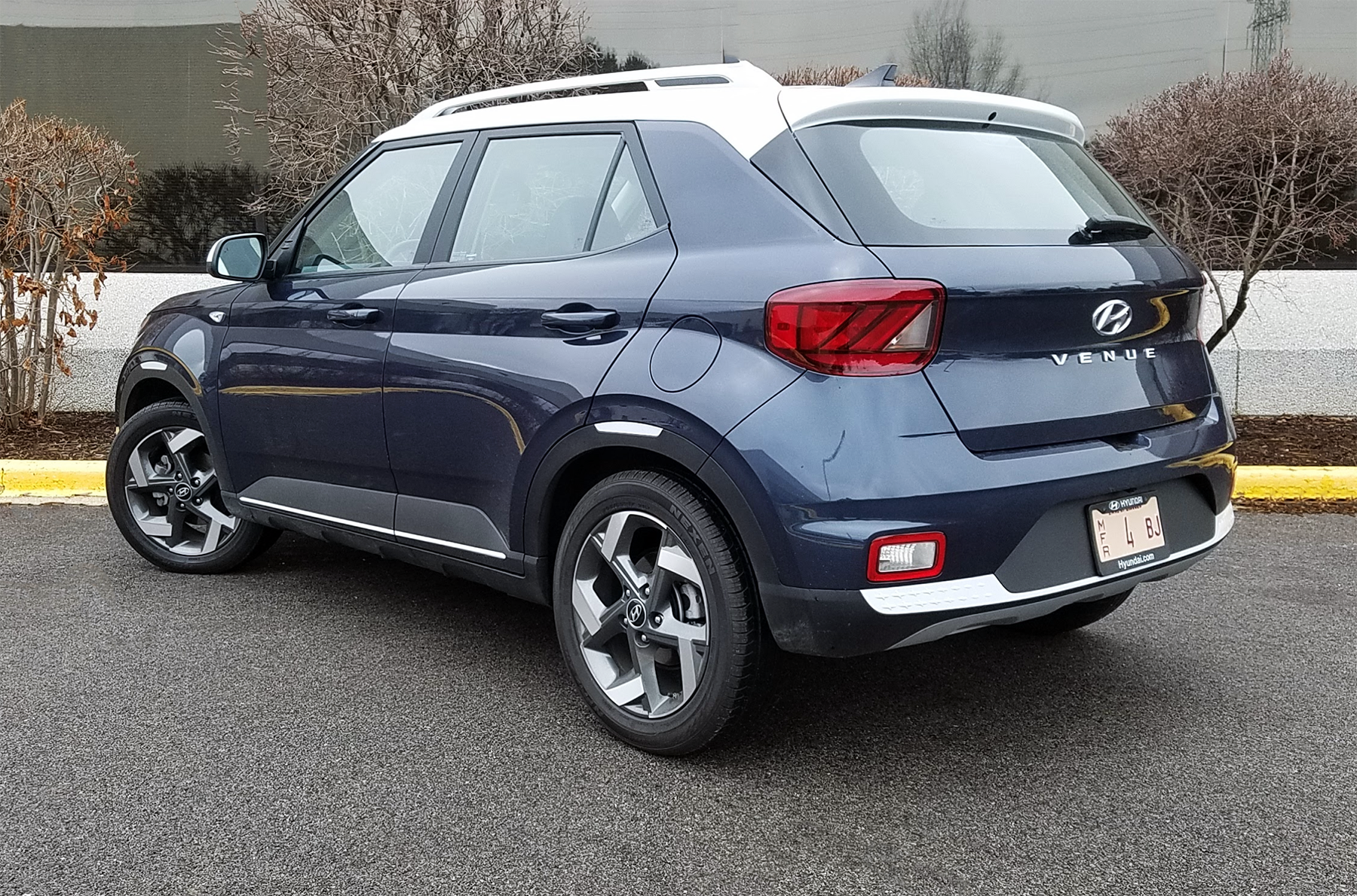
Sort-of-almost sport-utility vehicles have undergone their own population explosion, with brand after brand fruitfully multiplying and seemingly filling every crevice the market affords. Is it any wonder, then, that for 2020 Hyundai is adding the Venue as its fifth crossover (sixth if you count the California-only Nexo fuel-cell vehicle)?
The Venue supplants the 5.1-inch-longer Kona as the entry-level SUV in Hyundai’s lineup. It is one of two newcomers to the subcompact class (the Buick Encore GX is the other) and is one of the smallest, most affordable vehicles in a segment that has ballooned to 16 entries—plus eight more hoity-toity premium jobs.
Test Drive: 2020 Hyundai Kona Ultimate
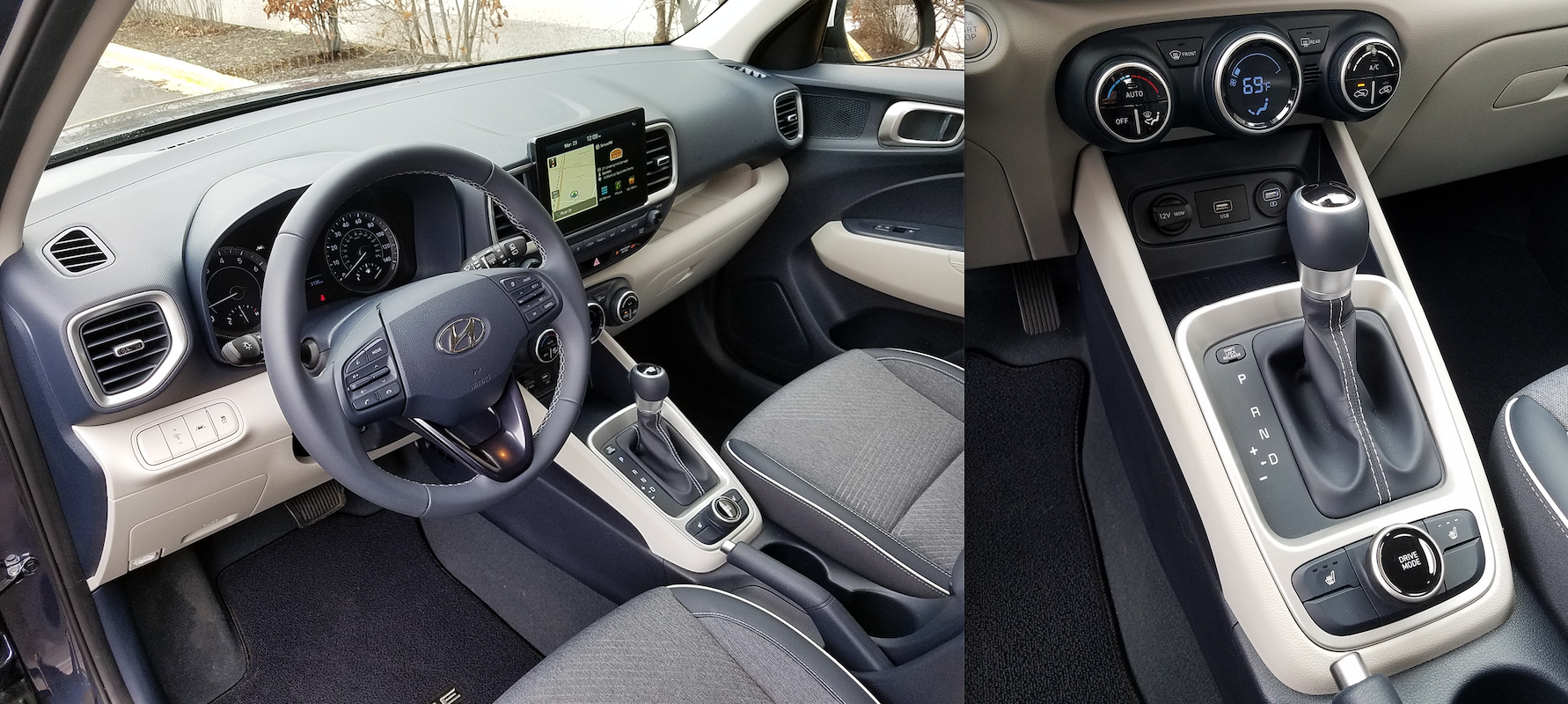
Anything under the general heading of SUV conjures up visions of off-road—or at least rough-road—prowess, but the Venue is part of a subcompact subgenre that leaves that kind of tough stuff to others. It is a front-wheel-drive vehicle, period. We’ll defer to the Venue’s Consumer Guide “Best Buy” report to explain how it stacks up against some other leading vehicles in the class, but it is inexpensive. Starting prices (with delivery) for the three-tiered model lineup run from $18,470 to $23,170. CG testers sampled a top-level Denim model that came to $23,305 with the addition of a set of carpeted floor mats.
Steve and Johnnie Road Test: 2020 Mitsubishi Outlander Sport 2.4 GT
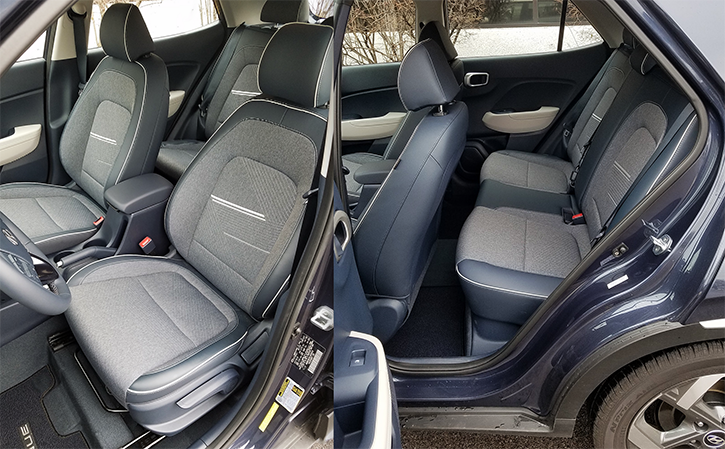
Hand-me-downs are a fact of life in lots of big families, but baby Venue’s powerplant is all its own within the Hyundai crossover clan. It is a 1.6-liter 4-cylinder engine joined to a continuously variable automatic transmission (CVT)—though base SE models can also be had with a 6-speed manual gearbox. With just 121 horsepower and 113 lb-ft of torque (that doesn’t peak until 4500 rpm), acceleration is modest and hardly exciting. There is a selectable “Sport” mode because this is 2020, and everybody does it. In the Venue this means delayed “upshifts” from the CVT that are none too satisfying in street driving. Out on the highway, Sport seems to deliver a bit more midrange vim and vigor, but the setting mostly just leaves the little engine to work harder, not necessarily better.
The silver lining is fuel economy. The 1.6/CVT pairing is EPA-rated at 30 mpg in city driving, 34 mpg on the highway, and 32 combined. When this driver topped off after 50 test miles, 65 percent of them covered in city conditions, he recorded 30.6 mpg, but CG editors’ collective mileage neared 36 mpg.
Test Drive: 2020 Kia Soul GT-Line Turbo
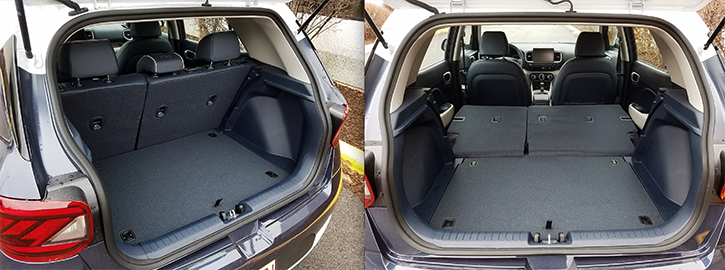
Ride is pleasantly smooth, with no vibration or looseness. Hit a bump, though, and it will be heard and felt in the cabin. The Venue steers easily, but without much feedback to the driver. Where are the limits when cornering? Take your best guess.
Where this new Hyundai truly earns its stripes is in the areas of passenger comfort and cargo room. There’s good front-seat headroom and legroom on seats with a pleasingly upright position for a good view of the road. Headroom is also generous in the second row, where legroom is a nice surprise in a vehicle this small. Two adults (or maybe three teens) will fit comfortably on the rear bench seat. Behind-the-seat cargo space is modest, but the 60/40-split rear seats fold flat to open up considerable load space—and absent all-wheel drive, liftover is fairly low to ease loading. There is lots of informal storage space under the floor around the spare tire.
The Denim Edition is available in one color scheme: a white roof over a particular shade of blue called—surprise!—Denim. The same shade appears in the interior, including on the fabric-and-leatherette seats. Off-white plastics and leatherette on the armrests, upper console, and lower dash provide a crisp contrast. The vast areas of unpadded plastic are grained and finished to a degree that makes the vehicle seem more premium than it really is—a nice trick. There are honest-to-goodness upmarket touches on hand, though. Standard equipment includes navigation, Android Auto/Apple CarPlay smartphone connectivity, heated front seats, and a leather-wrapped steering wheel and shifter knob to match the interior color.
Test Drive: 2019 Nissan Kicks SR
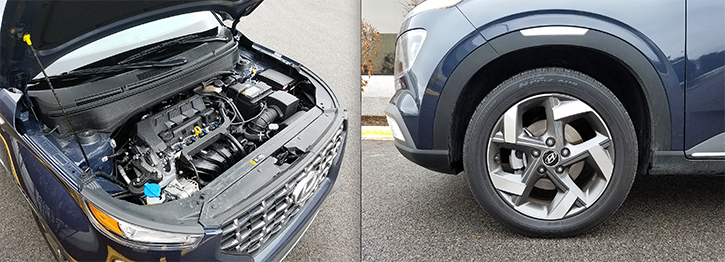
Inputs to the audio system (with standard satellite radio) are easy to make on the 8-inch touchscreen. The climate-control system has big, convenient dials, one for setting temperature and another for selecting fan speed, with buttons for front and rear defrosters. Cabin storage rests with a big glove box, small console box under a sliding armrest, and a mesh pouch on the back of the front passenger seat. There are dual cup holders in the console and storage pockets in all four doors with bottle holders in the rear ones.
Standard safety features include forward-collision warning with automatic emergency braking and pedestrian detection, lane-keep assist, a driver-attention monitor, and blind-spot and rear cross-traffic alerts. The Venue Denim rolls on 17-inch alloy wheels, and boasts heated external mirrors, body-color mirror shells and door handles, LED projector headlights, roof rails, keyless entry and starting, dual USB charging ports, and Hyundai’s Blue Link connected services.
The population explosion of crossovers has opened the field to all shapes and sizes of vehicles. With the Venue, Hyundai seems to be making the case that there’s still at least a little room for another one.
Test Drive: 2019 Toyota C-HR Limited
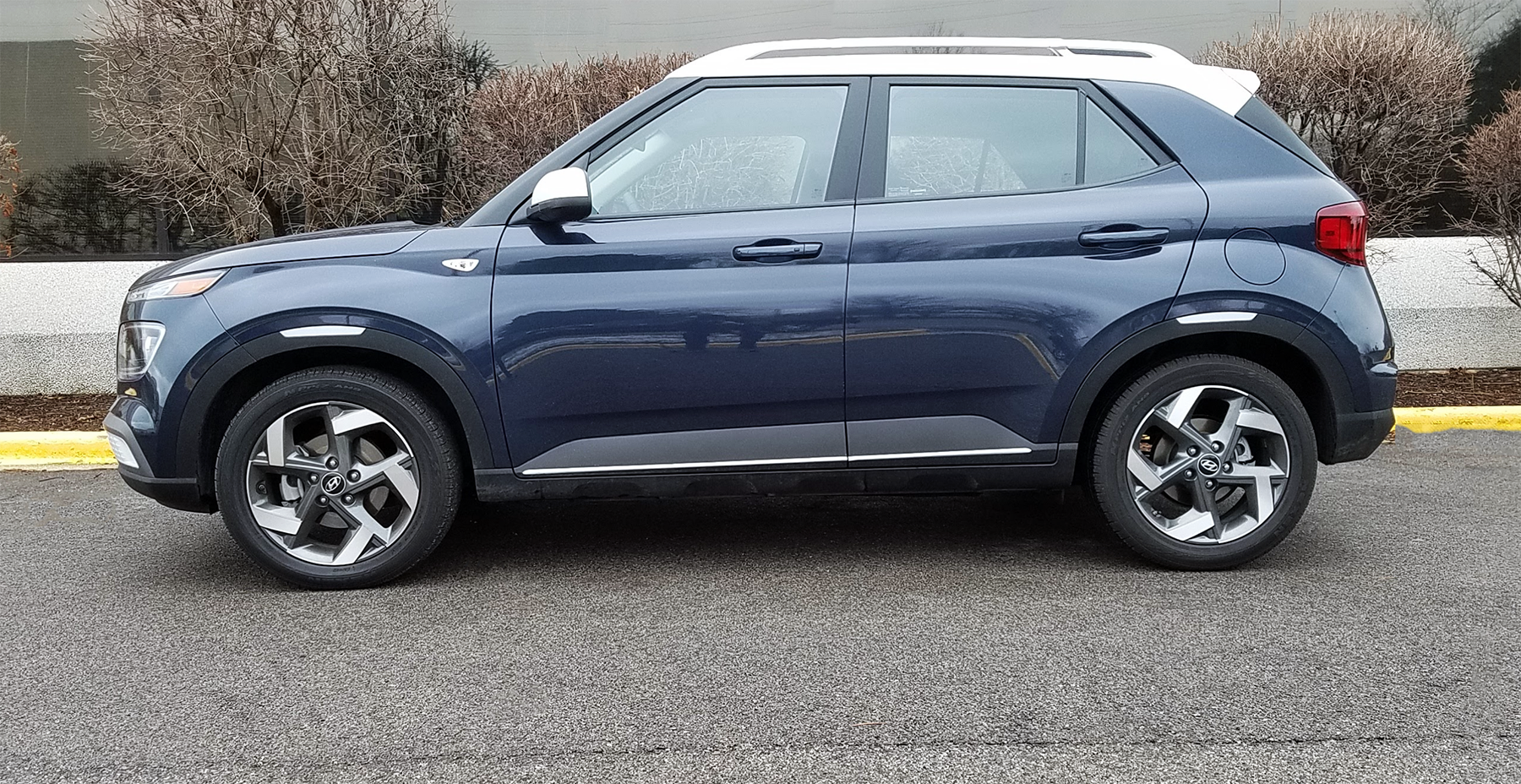
Stream every episode of the Car Stuff Podcast right here.
2020 Hyundai Venue Denim Edition

